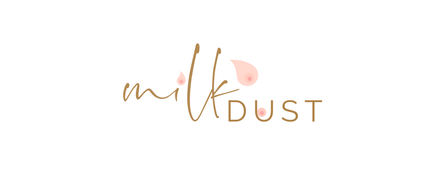Many new moms are looking for ways to get back in shape without sacrificing milk production. Losing weight while breastfeeding can be super tricky because lactation requires extra calories, yet you don't want to eat too many calories to stall weight loss. Calorie counting during breastfeeding can actually really help with milk supply and weight loss, but only if it is paired with the proper nutrients.
Many breastfeeding mamas lose milk supply when they only count total calories:
Purely counting calorie intake is a great first step to losing weight, but there are so many increased nutrient needs during lactation, that a lack of nutrients can diminsh your breast milk really fast. Focusing on a healthy diet is actually the most important thing for weight loss without losing milk supply. This is where counting macros can be an amazing tool to lose weight safely, ensure you are getting enough nutrients, and protect your milk production.
What are macros?
Macros are the basic macro nutrients in our food. There are three of them: Carbohydrates, Protein and Fats. By having macro goals each day, you are ensuring your total calorie intake consists of the proper nutrients. When you start counting macros, you will have a protein intake goal, a carbohydrate intake goal and a fat intake goal. These goals are set in total grams per day. You will also be at a small, total calorie deficit, which will ensure some fat loss without a lower milk supply. The only issue with counting macros is that it can be very tedius and overwhelming at first, just like any new diet plan.
Carbohydrates are the body’s main source of energy, so they’re important for keeping up your energy levels while breastfeeding. They also help the body store and use fat, which is important for both you and your baby.
Proteins are essential for the growth and repair of tissues, and they also play a role in immunity. Breastfeeding mothers need extra protein to support the growth of their babies and to heal any damaged tissue from pregnancy and childbirth. Take a look at our Milk Dust breastfeeding protein powder for help with getting your protein, and boosting your milk supply!
Fats are an important source of energy and help the body to absorb certain vitamins. They also play a role in brain development, which is why they’re so important for growing babies. Breastfeeding mothers need to make sure they’re getting enough healthy fats in their diet to support their baby’s development.
Macros are important for breastfeeding moms due to the following reasons:
Help to regulate breast milk supply and production.
- Provide the energy needed for a breastfeeding mom.
- Help to heal and repair the body after childbirth.
- Reduce the risk of developing certain diseases.
- Help to ensure that mums are getting enough calories and nutrients to support both themselves and their babies.
Luckily, our complete Milk Dust Macro Diet Plan for Breastfeeding is FREE right now if you purchase a bottle of our Milk Dust Metabolism! Just use code: NEWYOU to get started!
A macros-based diet is a great way to ensure that you're getting enough nutrients for yourself and your baby. In this blog post, we'll discuss what macros are, and how they can help you maintain your milk supply while nursing. We'll also provide some tips for how to eat well while breastfeeding so if you're looking for ways to improve your health and your baby's health, read on!
Why macros are essential for breastfeeding mothers:
We all know that breastfeeding is best for babies. But what many people don’t realize is that what you eat while breastfeeding can affect your baby, too. That’s why it’s important for breastfeeding mothers to pay attention to their diet and make sure they’re getting enough of the right nutrients – including macros. Studies have shown that diets low in protein correlate to a low milk supply, and specific nutrients do pass through breat milk to baby.
Macro nutrients are the foundation to supporting the hormonal processes responsible for lactation. A diet high in sugar and carbohyrdates, while low in protein can negatively affect blood sugar, insulin levels and estrogen levels. When these chemicals start getting out of whack, so does prolactin. If estrogen stays high, prolactin levels can't be where they are needed for proper lactation. This is where we can see fluctuations in milk supply with diet. Many mamas will notice a dramatic increase in milk supply just from a couple days on our breastfeeding nutrition program and meal plan. This is because they are balancing their blood sugar and providing their bodies with the nutrients it needs.
When the body is properly nourished, it will let go of fat:
Even better, when macro ratios are balanced, the body can function fully nourished. This signals less of a need for stored nutrients, which are stored in fat cells. The body naturally holds on to baby weight during pregnancy, so there are reserves to fuel lactation. When the body is getting enough protein, carbohydrates and fat, it can let go of stored nutrients. If this seems overwhelming, we have a complete nutrition guide with a macro plan that will walk you through everything you need to know on your diet, what to eat and why, and how to determine your macros on your own! We have have a complete recipe pack with macros already counted for you.
How to calculate your macros?
If you want to make sure you are eating enough to support your breastfeeding journey, there are a few things you need to take into account. First, you need to know how many calories you should be eating per day. The National Institutes of Health provides a handy calculator that can help you figure this out. Once you know your daily calorie needs, you can start to think about the macronutrients - protein, fat, and carbohydrates - that you need to eat each day.
There are a few different ways to calculate your macros, but one of the simplest is to use the Plate Method. With this method, you start by filling half of your plate with non-starchy vegetables, then a quarter of the plate with lean protein, and a quarter of the plate with whole grains or starchy vegetables. This will give you a good balance of nutrients and help you hit your macro goals.
Of course, everyone is different and you may need to adjust your macros based on your own individual needs. But following these guidelines can help you make sure you are getting the nutrition you need to support yourself and your baby.
The protein hack for tracking macros while breastfeeding:
If you are really struggling with keepingn track of your marcros, which can be difficult to keep up with if you are caring for a newborn, there is a protein hack that can make counting so much simpler! The only number you need to track is the grams of protein you want to hit each day. For example, if you need to eat 120 grams of protein each day, you would plan your protein intake for the day based on those grams. For example, one Milk Dust protein shake offers 16 grams of protein per scoop. Combine that with 2 eggs and you are at about 32 grams of protein. Find some foods to get your remaining 88 grams, and then all you have to do is track the rest of your calories with either carbs or fat. If you have 120 grams of protein, that is 480 calories total. If your goal is 1500 calories, that leaves you with 1020 calories you can have of carbohydrates and fat.
To sum it up, you take the total number of calories you want to eat for your day, and decide how much of that is going to be protein. Maybe 45-55%. Divide the total calories of protein by 4 to get your total grams of protein per day. Because protein is so important for lactation, this is a great trick for a nursing mom to hit their postpartum weight loss goals.
What do I use to track my macros while breastfeeding?
Similarly, there are different ways to track macros, but the most popular method is to use a food tracking app and calorie calculator like MyFitnessPal. Once you have your account set up, you'll need to input your weight, height, age, and activity level. Based on this information, the app will generate your daily calorie needs and macro goals.
There are a few things to keep in mind when tracking macros. First, remember that your macro goals are based on your weight, so if you lose or gain weight, your macros will change. Second, tracking macros can be a bit of a learning curve, so don't get too discouraged if you don't hit your numbers perfectly at first. Just keep track of what you're eating and adjust as needed.
What if I my milk supply drops?
If you are counting macros, and hitting your daily food intake, but you aren't making as much milk, there are some things you can do to increase your supply, without completely giving up on your diet plan.
- If you aren't eating a clean balanced diet, then start eating better macros. Take out any junk food, processed carbohydrates, sugar, breads, pastas and crackers right away.
- Increase your carbohydrate macro ratio by 5-10% and decrease your fat ratio. This will give your body more glucose for milk production
- Make sure you eat good fats from avocados, nuts, seeds and fish
- Try to get more vitamin d from outside if possible
- Work with a lactation consultant on your macros to see if they have suggestions
- Try increasing total calories by 200 calories for one day
Milk Dust is an exceptional protein powder that is created to prevent your supply from dropping as you start a new diet program. Whether you count macros, try the keto diet, or go for a low carbohydrate diet, Milk Dust will help you get your protein needs while giving your body amazing nutrients and lactation-boosting herbs. It also tastes amazing, and it will help fight those sugar cravings!
What if I crave sugar?
As mentioned, Milk Dust is specifically formulated for combatting those sugar cravings. It has a propietary blend of nutrients like chromium, magnesium, cinnamon bark and turmeric, which have all been used to balance insulin levels in diabetic patients. With the help of Milk Dust, you can greatly reduce or stop your sugar cravings! If you don't want to use a protein powder, make sure to fill up on high-fiber fruits and vegetables for your carbohydrates, which will help you feel really full. Feeling full helps reduce sugar cravings immediately.
How do I know how many calories to eat each day while breastfeeding?
It actually isn't as hard as you may think to determine the number of calories you should eat each day to maintain your milk supply and also lose weight. There are calculators that can help you determine your basal metabolic rate, but those are very general. The best method is to decide how many calories your body wants and needs.
The first step is to track your calorie intake for three days. Eat as you normally would and exactly what you want. This will give you an average of your current daily intake that is keeping you at the weight you are at.
The second step is to subtract 200-500 calories from that number, and that is your total calories to eat each day. Rather than guessing with generalized calculators, this is a great way to get your personal numbers, and achieve your goal body weight safely.
The good news is that macro counting takes just a bit of work in the beginning, but it is a great lifestyle for weight management even after breastfeeding.
I have a lot more resources for you, including recipe books, and products that can help you achieve your goals without sacraficing your milk supply at all!
If you want more help to lose weight, I have a great Breastfeeding Weight Loss + Fitness Pack that has EVERYTHING you need to lose the baby weight safely.
I give you $100 back if you lose 10lbs, so you have nothing to lose!










